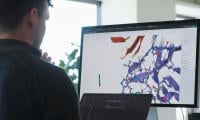KARACHI: The State Bank of Pakistan (SBP) on Friday warned that soft interest rates scenario and a falling investment in the government papers could erode banks profits in the current quarter of 2017.
“In the current environment, the profitability (and key indicators, such as return on assets and return of equity) of the banking sector may come under pressure in the next quarter,” said the SBP quarterly performance review of the banking sector for the October-December 2016 period.
“Low interest rates, receding investments in government securities and maturity of high yielding Pakistan investment bonds is already having an impact on the interest income of the banks and could keep their earnings in check in the first quarter of 2017.”
The State Bank said the dip in interest margins and reducing quantum of investment narrowed the year-to-date profitability of the banking sector. As a result, return on assets declined to 2.1 percent in the quarter under review as compared to 2.5 percent in October-December 2015, it said.
Banks’ investments fell 1.5 percent in the October-December period of 2016 mainly on account of decline in investment in government securities. The bank, however, said income from growing advances during 2016 may partially offset the decline in returns on investments.
“Growth in advances to private sectors exceeds historical trend. The key highlight of the quarter is the impressive growth in advances to private sector; highest fourth quarter growth in the last 10 years,” it added. “The asset base of the banking sector expanded 4.6 percent in the fourth quarter of 2016. The key contribution came from demand for credit from private sector due to lag impact of monetary easing, better economic conditions, and improved liquidity.”
Improved advances were observed in the textile sector, the largest borrower of the banking sector. Besides, sugar, energy, agribusiness, and cement are some other sectors, which availed major financing from the banking sector in the quarter under review.
The asset quality of the banking sector improved with a decline in non-performing loans (NPLs) and corresponding ratios. Particularly, NPLs to loans ratio receded to 10.1 percent, the lowest level in the eight years. Recoveries in NPLs played a pivotal role in bringing the ratio down. The coverage ratio (provisions to NPLs), jumped up to 85 percent in the fourth quarter of 2016 as compared to 82.7 percent in the preceding quarter.
The central bank cautioned banks against the risks of growing corporate loans. “…the uptick in advances may lead to higher risk weighted assets,” it said. However, strong solvency remains intact as capital adequacy ratio of 16.17 percent as of December 31, 2016 was well above the minimum required level of 10.65 percent.
Besides, it said pressure on profitability may constrain the plough back of retained earnings to capital base. “As part of Basel-III implementation process, the regulatory capital adequacy requirements are set to increase in the future.”
The Bank said the solvency of the banking sector remains robust and is expected to remain so in the first quarter of 2017. “Fund based liquidity is expected to remain comfortable, while market liquidity (and banks’ financial borrowing) will be largely driven by government’s institutional choice for borrowing (SBP vs. commercial banks).”
The solvency profile of the banking sector remains robust as capital adequacy ratio of 16.17 percent is well above the minimum required level of 10.65 percent.
The Bank said deposit growth remained on steady path, “while fourth quarter’s profit has improved over last years’ though entire year’s profit slightly narrowed owing to low interest rate environment.”
Deposits – the key funding source of the banking sector – grew 6.4 percent in the October-December period of 2016 as against 13.6 percent growth in 2016.
“The addition in the overall deposits has been contributed by non-remunerative current deposits followed by fixed deposits and saving deposits,” the SBP said. “The high deposit growth in the 4th quarter as well in the entire year is a welcome sign considering deceleration in deposit growth observed in the last couple of years.”















